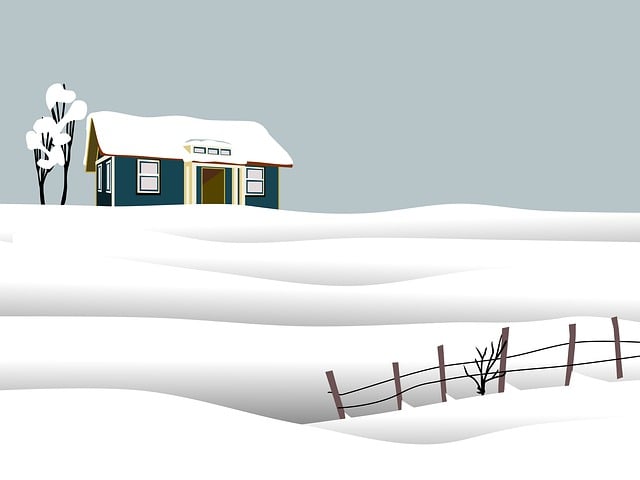DIY Fence Installation Tips for New Bedford, Massachusetts Homeowners
Considering a DIY fence installation? For New Bedford residents, selecting the right fence type is the first step. Whether you opt for wood, vinyl, or chain-link, each material comes with unique benefits and considerations. Before breaking ground, meticulous planning is crucial. This article guides you through the process, from understanding your options to gathering the necessary tools and navigating local regulations. By following our step-by-step tips, you’ll be well on your way to installing a durable and aesthetically pleasing fence for your New Bedford yard.
- Understanding Your Fence Options for New Bedford Yards
- Measuring and Planning: A Step-by-Step Guide
- Gathering the Right Tools for the Job
- Installing Your Fence: Practical Tips from Top to Bottom
- Local Regulations and Permits: What Every Homeowner Needs to Know
Understanding Your Fence Options for New Bedford Yards
When it comes to fencing your New Bedford, Massachusetts yard, homeowners have a variety of options to consider. Wood is a popular choice for its classic aesthetic and relative affordability. However, it requires regular maintenance to prevent rot and insect damage. Vinyl fencing offers low-maintenance benefits with a wide range of colors and styles available. It’s durable against the region’s harsh weather conditions but can be more expensive upfront. Chain link fences are robust, affordable, and easy to install, making them suitable for security or pet containment purposes.
Before deciding, assess your yard’s unique features. Consider the size and shape of your property, surrounding landscapes, and nearby structures that might affect fence placement. Local regulations also play a role; check with New Bedford’s planning department about any specific guidelines or restrictions regarding fence height, materials, and installation techniques to ensure your project complies with codes.
Measuring and Planning: A Step-by-Step Guide
Before you begin installing your fence, meticulous planning is key. Start by assessing the perimeter of your property to get a clear understanding of the fence’s length and shape. Use measuring tape to take accurate readings at various points along the boundary, marking them with flags or stakes for reference. Create a detailed map or sketch of the area, noting any obstacles like trees, shrubs, or utility lines that might affect your layout.
Next, decide on the type and style of fence you want – wood, vinyl, chain-link, or another material. Each option has unique installation requirements, so consult the manufacturer’s instructions for guidelines specific to your chosen fence. Plan the height and any additional features like gates or posts, ensuring they align with local building codes and regulations. This step-by-step process will lay the foundation for a successful DIY fence installation.
Gathering the Right Tools for the Job
Before starting your DIY fence installation project, gathering the right tools is essential. You’ll need basic tools like a hammer, measuring tape, level, and post-hole digger for digging and setting up the fence posts. Additionally, a power drill with various bits, a saw (either hand or electric), and a string line will make cutting and aligning boards easier. Don’t forget protective gear such as safety glasses, gloves, and ear protection to ensure your safety during the installation process.
Having the right tools not only makes the job faster but also ensures better results. Consider renting equipment if you lack certain tools, especially for tasks that require heavy-duty machinery. With the right preparation, you’ll be well on your way to installing a sturdy and attractive fence that enhances your New Bedford, Massachusetts property’s curb appeal.
Installing Your Fence: Practical Tips from Top to Bottom
When installing your fence, start by planning the layout and ensuring all necessary permits are in place, adhering to New Bedford’s local regulations. Choose a fence style that complements your home’s architecture and provides the desired privacy or security. The foundation is key; prepare a level base using concrete posts sunk deep into the ground for stability.
Measure and mark the fence line accurately, considering any curves or corners. Use string and stakes as guides during construction. Ensure regular spacing between posts to maintain structural integrity. Add horizontal rails at regular intervals to support the fence panels, securing them with brackets. Fill in the panels, finishing the top rail, and trim excess material for a clean look.
Local Regulations and Permits: What Every Homeowner Needs to Know
Before tackling any DIY fence installation project, New Bedford homeowners should familiarize themselves with local regulations and permits. Each municipality has specific guidelines regarding fence construction, including height restrictions, permitted materials, and distance from property lines. Failure to comply with these rules can result in fines or the requirement to remove the fence.
Checking with the local building department is crucial to determine if a permit is needed for your project. You’ll want to ensure you understand any set-back requirements, maximum fence heights, and materials that are approved for use. Being proactive and ensuring compliance from the outset saves time, effort, and potential headaches down the road.
